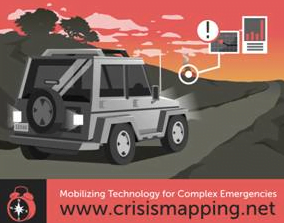Ed note: The report Disaster Relief 2.0: The Future of Information Sharing in Humanitarian Emergencies analyzes how the humanitarian community and the emerging volunteer and technical communities worked together in the aftermath of the 2010 earthquake in Haiti, and recommends ways to improve coordination between these two groups in future emergencies. The UN Office for the Coordination of Humanitarian Affairs (OCHA), together with the United Nations Foundation and Vodafone Foundation Technology Partnership, commissioned the report, which was researched and written by a team at the Harvard Humanitarian Initiative.
The Disaster Relief 2.0 Blog Series provides a public forum for people from both the humanitarian and volunteer and technical communities to discuss ideas in this report and the future of disaster relief.
You can follow conversations about the report on Twitter using the hashtag #DisasterTech and on the UN Foundation’s Facebook page. Readers can submit questions to the report’s authors through those channels; a transcript with answers to select questions will be published on UN Dispatch on April 11, 2011.
Thinking Spatially About Crowdsourcing
By Bronwyn Agrios
If Web 2.0 is the Web plus interactivity and conversation, then you can think of disaster response 2.0 as increased interactivity and conversation between responders, affected populations, concerned communities, governmental agencies, and NGO’s. Crowdsourcing and social networks are helping to fill the information gap in a timely manner when a disaster strikes. They provide more information about what is happening in the affected area.
In our work here at Esri the past several months I’ve learned a few important things about the usefulness of crowdsourcing in disaster response which I’d like to share.
1. Social networks + location can connect you with your neighbor
Location-aware social networks have a huge potential for enabling communities to help themselves during a crisis. Consider this example from the Chicago snow storm this year. Ushahidi setup a platform that allowed Chicago residents to post both needs (plow needed) as well as solutions (extra shovel).
Providing this inherently spatial information in a spatial context can hopefully connect individuals and optimize the use of trained resources.
2. Accurate locations lead to good decisions (poor location accuracy does not)
While spatial accuracy of content from social networks is really unknown, I have found that considering the type of social network I’m working with helps a great deal in this regard. Consider Twitter, people tweeting are not necessarily thinking about location and probably don’t even realize that their tweet could be used to gain insight into disaster response efforts.
Compare this to someone purposefully posting to a managed crisis response network that contributes volunteered information to the response effort. A network that produces actionable information is probably more likely to solicit actionable content.
3. Spatial analysis is key
Performing spatial analysis allows you to transform data into intelligence by uncovering trends and correlations not visible in the raw data.
With an enormous number of reports, how can we make sense of the situation?
Visualizing reports as hotspots, or trends, gives us an idea of density. This map showing hotspots of road closures helps responders and citizens make decisions about how to travel. Hotspots also indicate several similar reports in an area helping to validate individual incidents thereby providing increased situational clarity.
There is great opportunity to use spatial analysis to make crowdsourced data actionable. I believe we are just beginning to take advantage of the immense power of these techniques.
Bronwyn Agrios is a part of a team at Esri that promotes and implements new ideas in spatial thinking, analysis, and application development, using both Esri and open source products. In addition to supporting these goals, Bronwyn aims to better understand how consumers of spatial products—from the average consumer to a GIS analyst—use spatial information to decipher the world around us, with particular interest in disaster events.




